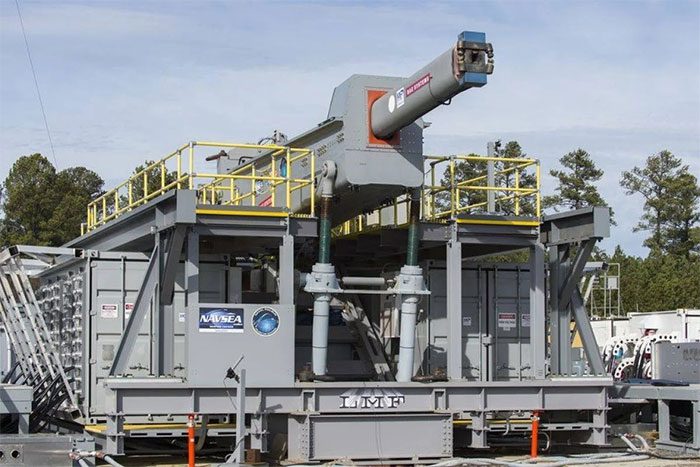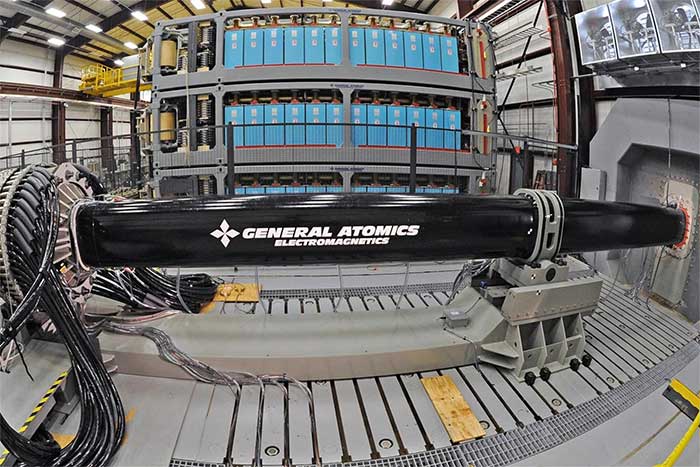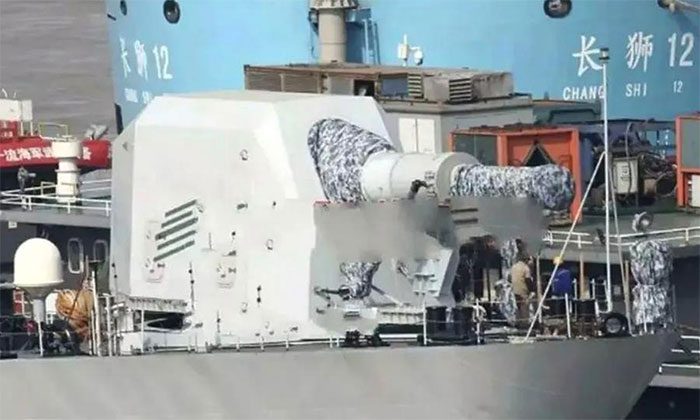The successful development of electromagnetic railguns has positioned China as a leader in this field, according to SCMP.
Weapons of the Future

This weapon uses electricity instead of gunpowder to launch projectiles.
Electromagnetic railgun (EMRG) is a weapon that utilizes electricity instead of gunpowder to launch projectiles. The creation of this type of gun has long been an ambition for many countries around the world, particularly the United States. However, China seems to have taken the lead in this area, with a group of Chinese naval engineers claiming to have successfully developed a railgun capable of firing multiple projectiles at high speeds without damaging the barrel.
These engineers stated that even when firing continuously, this new generation weapon maintains a significant level of accuracy.
According to SCMP, projectiles exit the barrel at a speed of 2 km/s, meaning that any target within a range of 100-200 km is within its sights. In comparison, conventional artillery typically has a maximum range of only a few dozen kilometers.
In one test, the railgun demonstrated its power by firing up to 120 rounds – quite close to the capabilities of some modern artillery systems.
Researchers reported that after the “thunderous sound” subsided, the entire system remained intact.
“Similar achievements have never been publicly reported before,” the research team from the National Key Laboratory of Electromagnetic Energy at the Naval Engineering University of China stated in a research paper published on November 10.

The U.S. abandoned the development of railguns in 2021, focusing instead on hypersonic missiles. (Photo: U.S. Navy).
“War machines are gradually shifting from chemical energy to electromagnetic energy. Continuous firing rate is a critical measure of the combat effectiveness of electromagnetic gun systems,” stated scientists and engineers led by Professor Lu Junyong in the research paper.
They added that this breakthrough means “the electromagnetic launch system can now fire reliably, quickly, and without interruption.”
SCMP reported that this achievement has elevated China to a leading position in the field of railguns.
The number of projectiles that can be fired at Mach 6 (six times the speed of sound) is a point of interest for scientists and engineers exploring railguns.
For railguns, electromagnetic forces propel a projectile or missile down the barrel, achieving speeds and ranges that conventional gunpowder-powered weapons cannot reach. This type of weapon is considered a game-changing technology and could hold a leading position in future warfare. However, for a long time, railguns were thought to be a product of science fiction.
Overcoming Barriers
The U.S. Navy has invested enormous sums of money and decades into electromagnetic railguns, but ultimately abandoned the project in 2021 to focus its limited resources on developing hypersonic missiles.
One of the main sticking points the U.S. faced with railguns was the inability to resolve the issue of how to fire continuously without damaging the system.
In contrast, the success of the Chinese team is largely attributed to a complex measurement and diagnostic system. Specifically, the system is capable of collecting and analyzing data from over 100,000 component points simultaneously. This number is nearly ten times the number of sensors on a modern aircraft. The computer system must also quickly identify problems and determine their causes. This is challenging as a complex machine operating in harsh conditions can encounter numerous malfunctions. Even the best technicians sometimes require days to troubleshoot issues.
However, the new AI system in China can reduce problem-solving time to milliseconds. Moreover, it can make decisions autonomously. For instance, if there is a minor issue, such as overheating of a component, the system will continue to operate. But if a serious issue arises that could cause significant damage, such as a propulsion problem, it will not fire even if a projectile is loaded.

Chinese researchers studying railgun technology say they can use this technology to accelerate a train through a vacuum tube at a speed of 1,000 km/h, faster than any current aircraft.
Professor Lu’s team states that this intelligent system has saved expensive weapons on three occasions. With each minor issue identified and resolved, the railgun operates more smoothly. In the last 50 firings, no malfunctions occurred.
Railguns and the accompanying technology are seen as a “gift” for the Chinese military. Some Chinese military experts believe that these railguns could fire over 200 km, enhancing the operational effectiveness of their navy. The Americans were the first to conceive a maritime version of the Star Wars concept. Back in 2011, the U.S. military spent four years testing 1,000 rounds of artillery. By 2018, the U.S. set its sights higher, aiming to create something that could fire 1,000 rounds without “breaking a sweat.”
However, the project was unsuccessful. According to SCMP, technical challenges, technology, and funding all became barriers. Consequently, the U.S. military abandoned railgun development in 2021. Some critics suggest that China may seize the opportunity to catch up and even surpass the U.S.
Chinese researchers are exploring bolder ideas based on railgun technology. They believe this technology could be used to accelerate a train through a vacuum tube at 1,000 km/h – faster than any aircraft currently flying.
Additionally, by elevating one end of the tube, they could launch missiles and potentially make space travel more affordable. In November, China constructed the world’s longest vacuum electromagnetic launch tube in Shanxi Province, and many research teams nationwide are eager to witness and test the new system.

















































